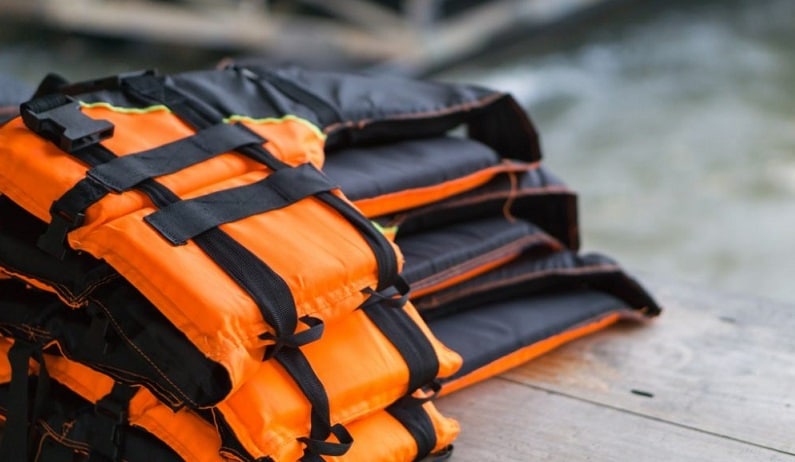Are you a boating enthusiast?
If yes, you need to invest in the right PFD and check the buoyancy before you go on any other water trips.
Water can be very dangerous, especially if you are sailing in deep water. Even if you know how to swim, it will not be enough.
Swimming in deep water is quite different from swimming in a pool. Because of this reason, life jackets and personal floatation devices are installed in boats.
These devices are used during emergencies. It will help you stay afloat in deep water till the time rescue arrives.
However, simply buying a PFD is not enough. You need to test the buoyancy of the device to make sure it is perfect for you.
Lifejackets are available in different sizes and forms. Not one size fits all. So, you need to test it beforehand. If you to stay alive during an emergency, you need to be familiar with the lifejacket.
Once you know how it works and if it is buoyant enough, you can sail anywhere in the world without any fear.
What is PFD?
PFD stands for Personal Flotation Device. It is commonly known as a life jacket or life vest. As the name goes, it is a device that helps you to float in water.
This device is mostly in the form of a vest or a jacket. You have to properly fasten this device on your body so that it can help you float.
The best thing about using this device is that you don’t have to swim. Even you become unconscious earing it. It will keep you afloat.
This device is mostly used by boating enthusiasts. If you own a boat or a vessel, you need to keep your PFD in it. It will help you during emergencies.
PFDs are available in different forms and sizes. You need to pick a size as per your body weight. If you regularly go on water outings and trips, you need to invest in a PFD and keep it safe for future use.
Recommended: Best Place To Put PFDs While You Are Out On A Boat?
What is Buoyancy and How Does It Work?
Buoyancy is the ability to float in water. It is the force because of which something floats in the water. In order to choose the right type of PFD, you need to check its buoyancy.
If it is buoyant enough, it will keep you afloat. But if it is not buoyant, you might sink in the water.
Before you use the PFD in an emergency, you need to make sure it is buoyant. You can check it through the displacement of water.
The buoyancy of a life jacket or PFD will differ from person to person. The weight of the person is the main factor in checking buoyancy. The weight will help you to know what size and type of PFD you will need.
The buoyancy of PFD is determined using the PFD rating. Every PFD has a rating. You need to check the rating to know the pounds of buoyancy the PFD will provide.
It is better to choose a PFD which provides more buoyancy. You need to choose a PFD with a higher rating. More rating means more buoyancy.
As our body is made of 80%, an adult needs only 12 pounds of buoyancy to float. It means you need to use a PFD with a rating of 15 or more.
The buoyancy of PFD also depends on weight, fat percentage, and water percentage in the body. As each and every individual has a different body weight, fat content, and water content in the body, it is best to check the buoyancy of the device in advance.
Read Also: What Causes A PFD To Wear Out Over Time?
Types of Personal Floatation Devices:
There are different types of personal floatation devices available in the market. You need to choose the one which is comfortable and helps you to easily float in water.
- The Offshore Life Jacket:
This is by far the best PFD you can use. It will provide you with the highest level of flotation. You can use it in deep water to stay afloat for a long time. This jacket covers the front and upper body. It will help you to easily float on your back and keep your head above water. The rating of this PFD is 7 for infants, 11 for kids, and 22 for adults.
- The Flotation Aid:
It is the most common type of life jacket. It is mostly used on beaches and lakes. People who are into water sports use this kind of PFD. You need to properly maintain your PFD by keeping it clean. The rating is 15.5 for adults.
- The Near-Shore Buoyant Vest:
This type of PFD is used in clam water. You can only use it near the shore. It is not meant for deep water. If you end up stranded in a lake, you can use this device. The rating of this PFD is 7 for infants, 11 for kids, and 15.5 for adults.
- Throwable Devices:
It is a ring shape floating device mostly found in boats and vessels. If a life jacket fails to keep you afloat, it is used as a last resort. It is thrown in the water so that the person can swim to it and hold on to it to stay afloat. The rating is 16 to 16.5 for adults.
- Special Use Devices:
These devices don’t look like a life jacket. It can be in the form of a belt, suit, or harness. It is mostly used by people who work with water. Paddle-boarders and water-rafters use these devices. This type of PFD has special features. It is safe from heat and chemicals. The rating is 15 to 22.
What Is The Best Way To Check The Buoyancy Of Your PFD?:
It is a golden rule to check the buoyancy of your PFD before an emergency occurs. There are many different ways by which you can check it. Most of the people wear it and test in a pool. However, you need to follow this step-by-step process to check the buoyancy. It is the best way.
- Step 1: Fitting
The first thing you need to do is make sure the PFD fits perfectly on your body. You need to wear it and check if it is comfortable. The jacket should hug you tightly in a comfortable manner. If it is loose, you need to adjust it.
- Step 2: Get Familiar with the PFD
Once the fit is perfect, you need to get familiar with the PFD. You need to check the safety belts and the whistles on the jacket. Make sure you know how to use all the features.
- Step 3: Submerge in Shallow Water
Now, you need to approach shallow water or a swimming pool and submerge in it with the jacket on. If the jacket moves around your body, you need to make it snugger and try again.
- Step 4: Lean Back in Water
Once your PFD is perfectly secure on your body, you need to lean on your back in the water. Make sure your head is above water, and you are able to breathe properly.
- Step 5: Check Freeboard
Freeboard is the distance between mouth and water. There should be a good distance between your mouth and water. If the freeboard is not perfect, you need to choose a PFD with a higher rating for more buoyancy.
- Step 6: Check Buoyancy
This is the most important step. You need to check if the jacket is comfortable on your body and helps to keep you afloat. If it is not comfortable, you might move in the water and affect the buoyancy. So it is best to choose a PFD which is comfortable as well as has better buoyancy to keep you afloat in water.
This is the best way to check the buoyancy of your PFD. If you have gone through all the steps and the PFD is perfect, then you can take it with you on your next boating trip. It will save your life during an emergency.
Recommended: What Is The Main Advantage Of Type IV PFD?

Ever wondered how you can have a cruising boat without getting into financial problems? The answer is here. That is the reason why we set up this blog to share with you, safety tips, answers to questions that have to do with fishing and hunting. You are going to love it!
Hey! I am Armstrong!

